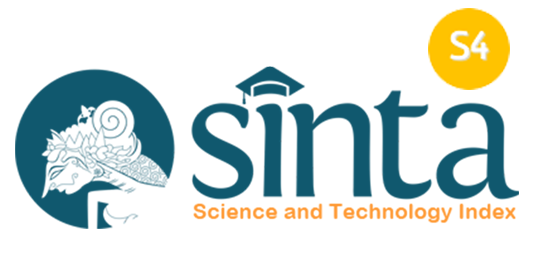Constructive Alignment Approach for Capstone Project with Industry Involvement: Case Study in Malaysia University
Abstract
A capstone project is a project-based learning course designed to bring aspects of an undergraduate student’s experience. To have an effective capstone project, it is imperative to properly design the curriculum with involvement from the industry. To improve the performance of the capstone project course, we used the constructive alignment approach to design the curriculum. In constructive alignment, we mapped the intended learning outcomes, the assessment tasks and the teaching/learning activities interchangeably with each other. Experiments were conducted with students enrolled in the capstone project courses in our university from February 2016 to May 2017. The result shows that the new design was able to improve the attainment scores for both learning outcomes and program outcomes. This improvement was also in line with marks by industry experts indicating good potential.
Keywords
Full Text:
PDFReferences
Allan, M., and Chisholm, C. U. (2008). Achieving engineering competencies in the global information society through the integration of on-campus and workplace environments. Industry and Higher Education, 22(3), 145–152.
Bell, S. (2010). Project-Based learning for the 21st century: skills for the future. the clearing house: a journal of educational strategies, Issues and Ideas, 83(2), 39–43.
Biggs, J., and Tang, C. (2011). Teaching for Quality Learning at University: What the Student Does (Fourth Edi).
Boss, S., Krauss, J., and Conery, L. (2007). Reinventing Project-Based Learning: Your Field Guide to Real-World Projects in the Digital Age. Washington: ISTE.
Crawley, E., Malmqvist, J., Ostlund, S., Brodeur, D., and Edstrom, K. (2007). Rethinking engineering education. The CDIO Approach, 302, 60-62.
Dolence, M. G. (2004). The learner-centered curriculum model: a structured framework for technology planning. EDUCASE Center for Applied Research, Research Bulletin, 2004(10), 17.
Engineering Accreditation Council. (2012). Engineering Programme Accreditation Manual. In Engineering Accreditation Council, BEM.
Ernst and Young. (2012). University of the future: a thousand year old industry on the cusp of profound change (Vol. 100).
Frey, B. B., Schmitt, V. L., and Allen, J. P. (2012). Defining authentic classroom assessment - practical assessment, research andamp; evaluation. Practical Assessment, Research and Evaluation, 17(2), 1–18.
Helle, L., Tynjälä, P., and Olkinuora, E. (2006). Project-based learning in post-secondary education - Theory, practice and rubber sling shots. Higher Education, 51(2), 287–314.
http://www.teaching-learning.utas.edu.au/assessment/how-do-i-write-criteria-sheets, Retrieved January 5, 2015
Levander, L. M., and Mikkola, M. (2009). Core curriculum analysis : A tool for educational design core. Journal of Agricultural Education and Extension, 15(3), 275–286.
Lok, B., McNaught, C., and Young, K. (2016). Criterion-referenced and norm-referenced assessments: compatibility and complementarity. Assessment and Evaluation in Higher Education, 41(3), 450–465.
Maleki, R. A. (2009). Business and industry project-based capstone courses: a reflection on the performance of student teams. Industry and Higher Education, 23(2), 103–110.
Mills, J. E., and Treagust, D. F. (2003). Engineering education - is problem-based or project-based learning the answer? Australasian Journal of Engineering of Engineering, 3(2), 2–16.
Prince, M. (2004). Does active learning work? A review of the research. Journal of Engineering Education, 93(3), 223–232.
Rosina, H., Virgantina, V., Ayyash, Y., Dwiyanti, V., and Boonsong, S. (2021). Vocational education curriculum: Between vocational education and industrial needs. ASEAN Journal of Science and Engineering Education Journal, 1(2), 105–110.
SEGi University. (2016). Self Assessment Report- Bachelor of Electronic and Electrical Engineering.
Todd, R. H., and Magleby, S. P. (2005). Elements of a successful capstone course considering the needs of stakeholders. European Journal of Engineering Education, 30(2), 203–214.
Ward, T. A. (2013). Common elements of capstone projects in the world’s top-ranked engineering universities. European Journal of Engineering Education, 38(2), 211–218.
DOI: https://doi.org/10.17509/ajsee.v2i1.35271
Refbacks
- There are currently no refbacks.
Copyright (c) 1970 Universitas Pendidikan Indonesia

This work is licensed under a Creative Commons Attribution-ShareAlike 4.0 International License.













